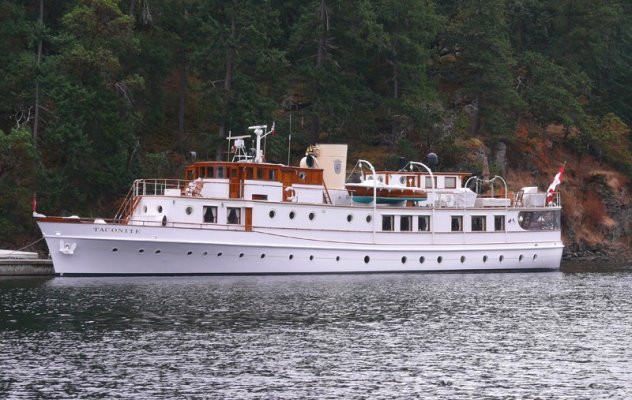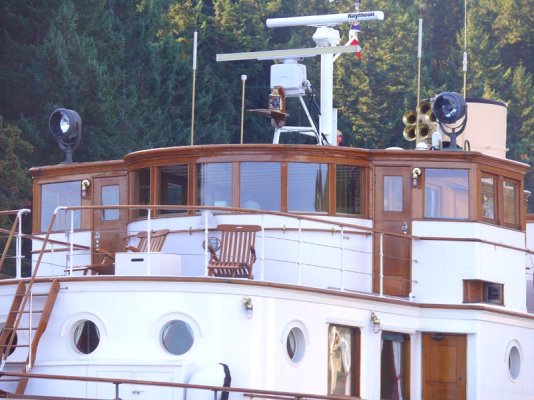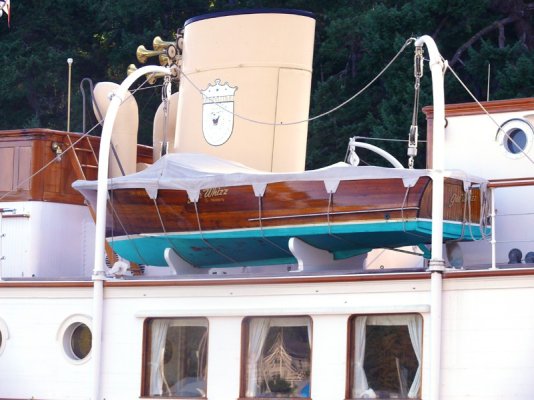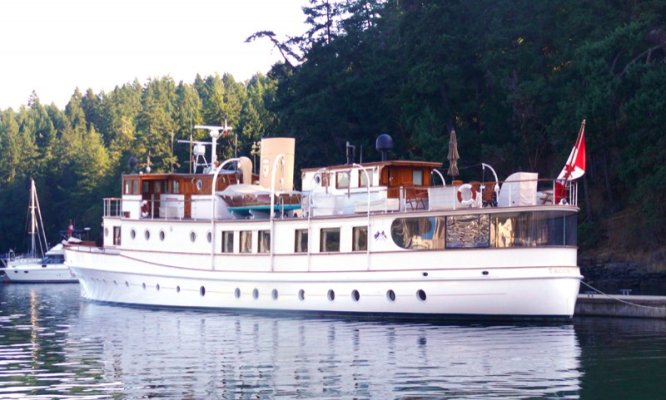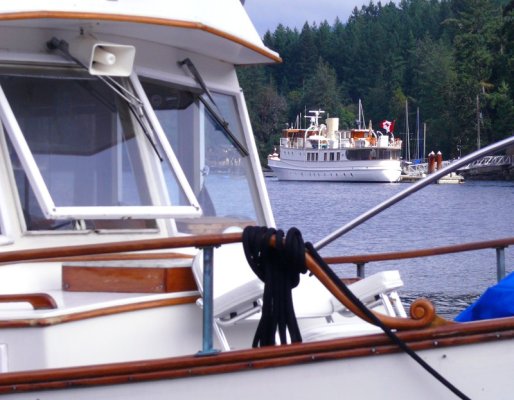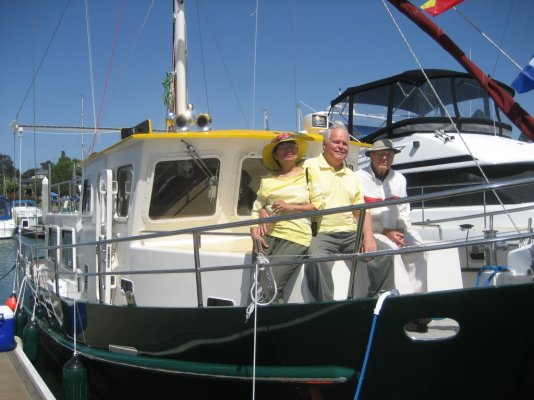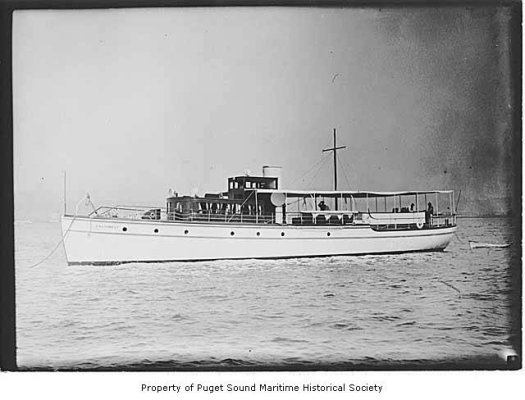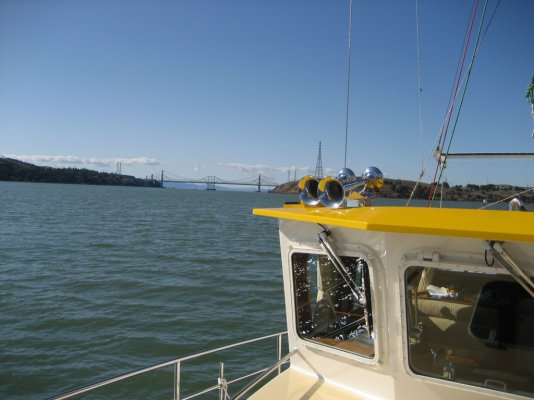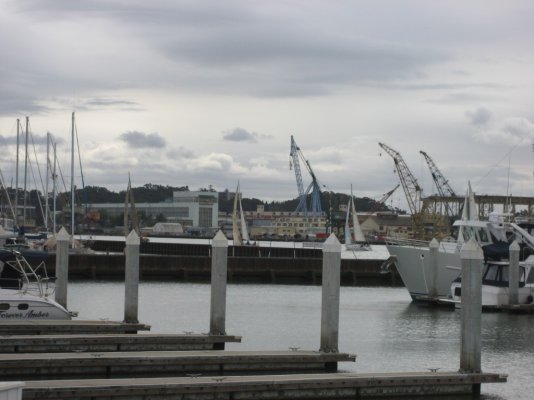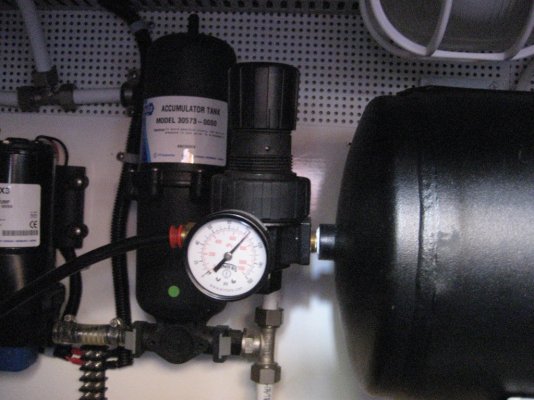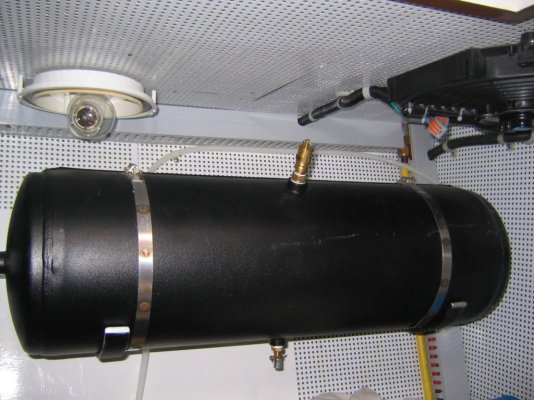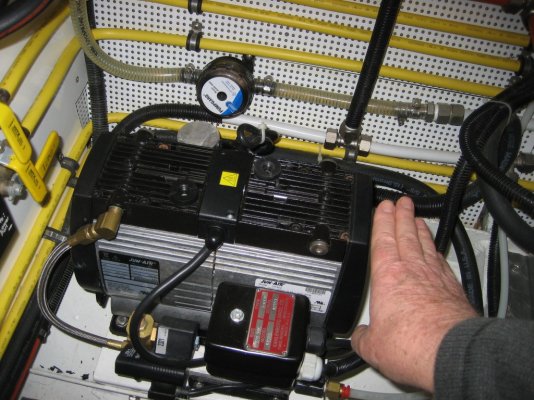Came across the Taconite (2) in Maple Bay last week.* Bill Boeing's first yacht, the Taconite (1) was built in 1915-16 and was directly responsible for the creation of Pacific Aero Products in 1916 which was soon renamed the Boeing Airplane Company.
The Taconite (2) was built for Bill Boeing in 1930 to replace the first Taconite.* Today it belongs to a fellow who splits his time between Vancouver and a home at Maple Bay.* The Taconite (2) is chartered out to folks who want to cruise the BC coast in style.* I'm told that in years past the Taconite's charter business was very busy but the last couple of years has seen it drop off considerably.* Nevertheless the yacht appears to be kept up in beautiful shape.
We were moored right across the channel from her and while as a Boeing employee I was expecting a dinner invitation for us and our friends on board the Taconite we apparently missed the text message...
The Taconite (2) was built for Bill Boeing in 1930 to replace the first Taconite.* Today it belongs to a fellow who splits his time between Vancouver and a home at Maple Bay.* The Taconite (2) is chartered out to folks who want to cruise the BC coast in style.* I'm told that in years past the Taconite's charter business was very busy but the last couple of years has seen it drop off considerably.* Nevertheless the yacht appears to be kept up in beautiful shape.
We were moored right across the channel from her and while as a Boeing employee I was expecting a dinner invitation for us and our friends on board the Taconite we apparently missed the text message...

